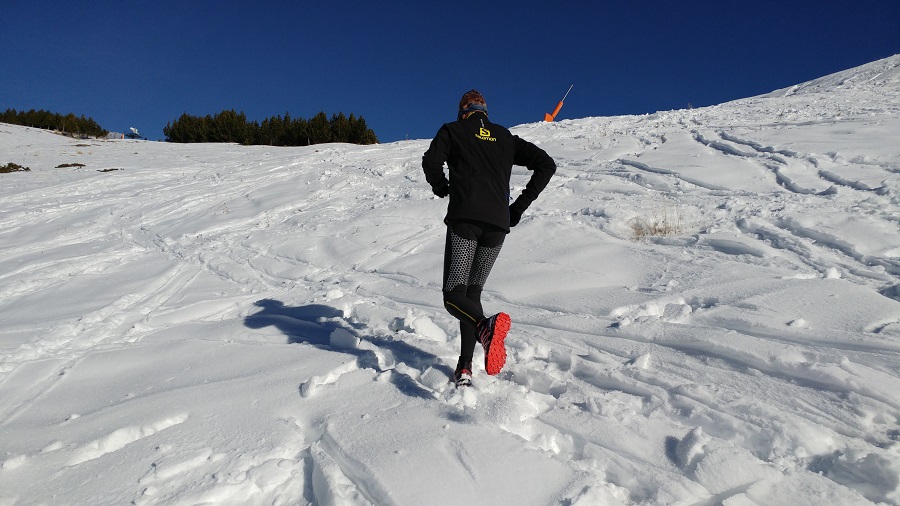4 mistakes using speed in strength training
In this article a review of the 4 errors using speed in strength training is made.
In this series of articles we deal with some of the most important concepts of strength training, collecting notes from the recently published book Strength, Speed and Physical and Sports Performance written by renowned researchers Juan José González Badillo and Juan Ribas Serna.
The attempt to take the speed of execution as a reference to organize the training, what has been called “speed-based strength training”, has given rise to a series of errors about what speed control can provide, attributing in some cases functions that it does not have. We have talked about what strength training can contribute, although it is also convenient to understand what the use of speed as a reference for training organization cannot contribute, as well as the inappropriate use of the concept of training based on speed.
Probably all errors arise from a poor understanding of what it means to “rely on speed of execution” for training. The first thing that should be very clear are all the possible contributions derived from speed control and, therefore, from the functions that are specific to it, which, in turn, would avoid errors related to what the controller cannot provide. speed control. There have been some clarifications below.
Probably all errors arise from a poor understanding of what it means to “rely on speed of execution” for training.
Execute the movements at the maximum speed possible
The first condition that must be met when training with the speed of execution as a reference is that each repetition must be performed at the maximum possible speed.
Not training at the maximum speed possible before the selected load (mass) does not make sense for two reasons. In the first place, because if the execution speed is not the maximum possible, the speed does not serve as a reference to determine either the relative intensity with which one trains or the degree of fatigue generated, which can be estimated by the loss of speed. in the series or between series as long as the speed is the maximum possible (Sánchez-Medina and González-Badillo, 2011; Rodríguez-Rosell et al., 2018)
Secondly, because if the load is moved at the maximum possible speed at the same relative intensity, the effect is greater than if it is done voluntarily at a lower speed (González-Badillo et al, 2014; Pareja-Blanco et al ., 2014).
If a certain relative load does not move at the maximum possible speed, the full training potential of said load is not used.
It could be said that if a certain relative load does not move at the maximum possible speed, the full training potential of said load is not used. If any professional considers that moving the load at the maximum speed possible is not necessary or is less favorable than doing it slowly voluntarily, it does not make sense to incorporate speed as a reference for dosing and control of training and its effect.
Therefore, whenever we talk about execution speed in this text, we refer to the maximum possible speed, unless otherwise indicated.
Mistake #1: There is a specific speed for each training objective
There cannot be a specific speed for each objective because the objective of strength training, as indicated, is unique: to improve the maximum force applied to any load, or, which is equivalent, to improve the speed to any load. This is so because by improving the maximum force applied to any load, it will have been possible to improve any of the possible objectives in the face of said load: in addition to the maximum force, – the production of force in the unit of time (RED), the speed at which the load is shifted, which means improved performance and improved power that is generated.
Therefore, if someone considers that these objectives are independent of each other or that some can be achieved and others cannot, or that there are objectives that are different from these, they are in serious error. Therefore, there is not a specific speed for each objective that we set ourselves, but having properly chosen the training speeds, the objective of improving the maximum force applied to any load will be achieved, which is the only possible one, although the training speeds most appropriate in each case may be diverse, depending on the characteristics and initial situation of each subject.
As a consequence of these errors about the concept of “maximum strength training”, in the literature related to proposals on how to train taking speed as a reference, numerous objectives are proposed, such as: training for maximum strength, speed, power, strength -power, strength-speed, speed-strength…, and each of them is associated with a speed of execution. For example, “maximum strength” is said to be trained at very low speeds < 0.5 m:s*), without further clarification.
This, naturally, is a mistake, among other reasons, because there are exercises that cannot even be performed at these speeds. For the rest of the “objectives” different speeds are given. If the term speed appears before the term force, such as “target” of “speed-strength”, the speed with which you train is greater than if the order is “strength-speed”. And so an imaginary force-velocity curve is configured, placing “their targets” along the curve.
The objective of strength training, as indicated, is unique: to improve the maximum force applied to any load
Naturally, there is not a specific speed for each objective that we set ourselves, because there is only one objective and because this objective can be achieved with a high variety of training speeds, which would be the same as saying that it can be achieved with a high variety. of relative intensities, as we have been able to verify in numerous cases throughout this text. But, naturally, as strength performance improves, the most appropriate maximum speed limit values to achieve all the possible effects derived from strength training change.
If, for example, in the early stages of training we say that the limit velocity, that is, the minimum of the cycle, is 1 m*s-1, it means that it is considered that given the initial situation of the subjects: age, time of training, experience, biological maturity, development of strength potential up to now…, the training will always be carried out with speeds >= 1 m*s-1.

As progress is made in each of the indicators of the initial situation of the subject, the speed limit values would decrease, that is, each time it would be allowed, or, probably, it would be necessary, to train with lower speeds to obtain the same values. goals. It should also be taken into account that the speed values for the same initial situation of the subjects may be different depending on the exercise used in the training.
Naturally, if all training is done at low or very low speeds, it is likely that the effects will tend to be greater in the zone of maximum loads (low speeds) than in the zone of light loads (high speeds) where the effect can be small or close to zero effect. On the contrary, if the speeds have always been high, it is likely that the effects will manifest themselves more notably in the high-speed area, although they will also occur, with a very high probability and even in some cases to an equal or greater extent. in the low speed zone.
In short, what really exists are strength training at different speeds, but all of them are maximum strength training.
Mistake #2: If you program a speed or speed-based workout, you have programmed a good workout
This error arises because it is based on the false assumption that each speed value serves to achieve a specific objective. The deduction is elementary and contrary to reason, because a “magical effect” is attributed to the fact that you train at a specific speed, “because that speed has the property of producing a specific effect.”
In proposing this, one is not even aware that what is being proposed nullifies the possible advantages of using speed “as a base” for strength training, because what is being done is transferring the errors of the programming based on the percentages of the RM or the XRM to the speed field.
The reasoning on which this proposal is based is simple: if high intensities are “good” for training “maximal strength”, I program a low speed and I am already achieving the objective of “improving maximum strength”, therefore ” the programming is good. Naturally, this does not make sense.
Many different speed ranges are useful to achieve all possible goals derived from strength training. For example, it is not true that for certain objectives, such as improving RM, it is necessary to use a certain speed in all cases, nor that another specific value is necessary to improve power.
Therefore, there is no optimal speed of general validity, but in each case, especially depending on the initial situation of the subject, certain speeds will be more appropriate than others. Even assuming that a training program based on speed is properly programmed, correctly applying all the indicators of speed control, the result can be a good, bad or regular programming, because the choice may or may not have been correct. of the speeds of the first repetition and the loss of speed in the series, which would also result in proper IE or not.
Mistake #3: Scheduling via speed ensures transfer
The speed itself does not ensure the transfer of anything. If the appropriate speeds are chosen when performing the appropriate exercises, the conditions can be given for transfer to occur. But if the speeds (of the first repetition and of the losses) are not adequate, the chosen speeds may not only not produce transfer, but may also lead to interference (negative transfers).
It could be affirmed that the values of speed and loss of speed in the series are closely related to the transfer (some of the studies commented throughout the text show this tendency), but not the fact of programming the training through the speed.
Error #4: the use and control of the speed solves the problem of the correct and correct selection of the loads
The use and control of speed does not solve the problem of the correct and correct choice of loads. However, the adequate use of the information that supports speed control does contribute to a great extent so that the professional has an increasing capacity to approach the choice of the best and most adjusted loads for the training of their athletes.
This is so because the information derived from speed control is the most relevant information that a technician or coach can hope to obtain about the characteristics of the training he is carrying out and its effect. The proper use of this information will allow the improvement of the training methodology.
These insights therefore allow informed decision-making, based, for the first time, on remarkably accurate knowledge of the magnitude and UP? charge that has produced a certain effect. Without forgetting that, precisely, the best measure of the effect is another important contribution offered by speed.
















